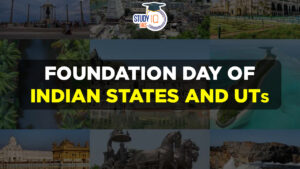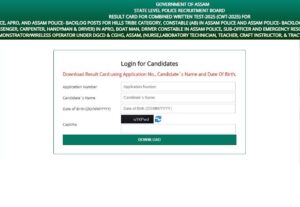Daily Current Affairs for UPSC 2023
Q) Recently seen in news, the ‘State of Global Climate 2022’ report was released by which one of the following organization?
- World Meteorological Organization
- United Nations Environment Programme
- United Nations Development Programme
- Intergovernmental Panel on Climate Change
Daily Current Affairs for UPSC – 27 May April 2023
Explanation:
- Option (1) is correct: The World Meteorological Organization (WMO) has released two reports titled “Global Annual to Decadal Climate Update 2023-2027” and “State of Global Climate 2022.” As per WMO, the annual mean global surface temperature between 2023 and 2027 will be 1.1-1.8 degree Celsius higher than the baseline temperature of 1850-1900 or pre-industrial levels. In 2022, annual mean global surface temperature was 1.15 degrees above the baseline and by 2027, it will exceed 1.5 degrees, a critical point beyond which there may be no return. The 2015 Paris Agreement, a legally binding international treaty on climate change, commits countries to limit the global average temperature rise to well below 2°C above pre-industrial levels, and to aim for 1.5°C. This was endorsed as a global target by the Intergovernmental Panel on Climate Change (IPCC) in 2018 and since then has been pursued in all climate dialogues.
Q) Consider the following statements about Iron Fortification:
- It involves adding ferrous sulphate to commonly consumed foods.
- Excessive iron in fortified foods can also damage the DNA.
- The Food Corporation of India is responsible for laying down guidelines for fortification of foods.
Which of the statements given above is/are correct?
- 1 only
- 1 and 2 only
- 2 and 3 only
- 1, 2 and 3
Explanation:
- Statement 1 is correct: Iron fortification is the process of adding iron to food or other products to increase their iron content. Fortification typically involves adding iron compounds, such as ferrous sulfate, ferrous fumarate, or ferrous gluconate, to commonly consumed foods or food staples. Some examples include fortifying cereal grains (such as wheat or rice), cooking oils, condiments, and infant formulas with iron.
- Statement 2 is correct: High iron levels can cause gastrointestinal problems such as abdominal cramps, constipation, or diarrhea. Iron irritation of the gastrointestinal lining can also result in gastrointestinal bleeding. There are some evidences suggesting that high consumption of iron elevates the risk of developing Type 2 diabetes. Excess iron can induce oxidative stress, leading to damage to cells, proteins, and DNA. Prolonged oxidative stress can have long-term consequences.
- Statement 3 is incorrect: In October 2016, Food Safety and Standards Authority of India(FSSAI) operationalized the Food Safety and Standards (Fortification of Foods) Regulations, 2016 for fortifying staples namely Wheat Flour and Rice (with Iron, Vitamin B12 and Folic Acid), Milk and Edible Oil (with Vitamins A and D) and Double Fortified Salt (with Iodine and Iron) to reduce the high burden of micronutrient malnutrition in India. The ‘+F’ logo has been notified to identify fortified foods.
Q) With reference to ‘NITI Aayog’, consider the following statements:
- It is established as a statutory body to serve as the Indian government’s policy think tank.
- The Vice-chairperson of the NITI Aayog is nominated by the Prime Minister.
- ‘E-Amrit’ is one of the main initiatives of the NITI Aayog.
Which of the statements given above is/are correct?
- 1 and 2 only
- 1 and 3 only
- 2 and 3 only
- 1, 2 and 3
Explanation:
- Statement 1 is incorrect: NITI Aayog is a non-constitutional and non-statutory body that acts as public policy think tank of the Government of India. It was set up in 2015 to replace the erstwhile planning commission, which worked on top-down approach.
- Statement 2 is correct: The Prime Minister is the chairperson of the NITI Aayog. The Vice-chairperson is nominated by the Prime Minister. Other members of the council include Chief Ministers of states, along with the Chief Ministers of Delhi and Puducherry and Lieutenant Governors of all UTs. Eminent persons are selected from leading universities and research institutions as temporary members. Maximum four members from Union council of ministers to be nominated by Prime minister as ex-officio members.
- Statement 3 is correct: NITI Aayog will act as a coordinator between centre and states for implementing programmes. Key initiatives of the NITI Aayog are as follows:
- 15-year road map
- 7-year vision, strategy, and action plan
- AMRUT
- Digital India
- Atal Innovation Mission
- Medical Education Reform
- E-AMRIT portal
- Agriculture reforms (Model Land Leasing Law
- Reforms of the Agricultural Produce Marketing Committee Act
- Indices Measuring States’ Performance in Health, Education and Water Management
- Transforming India Lecture Series
Q) Consider the following statements about ‘Rare diseases’:
- India classifies the disease as rare if the prevalence rate in the population is less than one percent.
- For the treatment of rare diseases, the National Policy for Rare Diseases, 2021 also permits voluntary crowd-funding.
- A grant of up to five crore would be given to the Centres of Excellence for the upgradation of diagnostic facilities for rare diseases.
Which of the statements given above is/are correct?
- 1 and 2 only
- 2 only
- 1 and 3 only
- 2 and 3 only
Explanation:
- Statement 1 is incorrect: Rare disease is a life-threatening condition that affects a small number of people compared with other existing diseases. Different countries have different definition. India classifies the disease as rare if the prevalence rate in population is 6% to 8%. Currently, there are about 6000 to 8000 rare diseases. However, 80% of all patients are affected by approximately 350 rare diseases. About 95% rare diseases do not have approved treatment and less than 1 in 10 patients receive disease-specific treatment. About 80% of rare diseases are genetic in origin and hence disproportionately impact children. In India, 72 to 96 million people are affected by rare diseases. Most of the patients do not reach adulthood due to the high mortality.
- Statement 2 is correct: Under the National Policy for Rare Diseases, 2021, the individuals suffering from rare diseases listed under Group 1 will be provided financial support of up to Rs. 20 lakh. The benefits will be extended to 40% of the population, who are eligible under Pradhan Mantri Jan Arogya Yojana. It also allows voluntary crowd funding treatment by setting up a digital platform.
- Statement 3 is correct: Under the National Policy for Rare Diseases, 2021, there are plans to set up eight ‘Centres of Excellence’ at designated places for prevention and treatment of rare diseases. They will be provided one-time grant of up to Rs. 5 crore for upgradation of diagnostics facilities.
Q) With reference to ‘Vinayak Damodar Savarkar’, consider the following statements:
- He was arrested on charges of plotting an armed revolt against the Montagu-Chelmsford reform of 1919.
- He established the Free India Society in Pune to work towards India’s liberation.
Which of the statements given above is/are not correct?
- 1 only
- 2 only
- Both 1 and 2
- Neither 1 nor 2
Explanation:
- Statement 1 is incorrect: Vinayak Damodar Savarkar (1883-1966) was born on 28th May 1883, in the village of Bhagur, near Nashik, Maharashtra. He is known through various titles, ‘Swantraveer,’ ‘Prince amongst the revolutionaries,’ ‘Ideologue of Hindutva,’ proponent of Hindu nationalism, Ideologue of Hindu Right in the Indian political spectrum. He is one of the key thinkers who articulated the necessity of a cultural reading of nation and nationhood and presented ideas in the form of ‘Hindu Akhand Bharat’ based on the framework of Hindutva. On 7 October 1905, he burnt all the foreign goods in a bonfire on Dussehra, as he was against foreign goods and propagated the idea of ‘Swadeshi’. In 1909, he was arrested on charges of plotting an armed revolt against the Morle-Minto reform (Indian Councils Act 1909). In 1911, he was sentenced to Kala Pani, the cellular jail of Andamans, for 50 years. After signing the petition to not participate in politics, he was released in 1924. He worked on the abolishment of untouchability in Ratnagiri.
- Statement 2 is incorrect: In Pune, Savarkar founded the “Abhinav Bharat Society”. He joined Tilak’s Swaraj Party. He established Free India Society in London that primarily worked towards the cause of India’s liberation outside the country. He established Mitra Mela, a youth collective which aimed to instill revolutionary nationalist spirit and consciousness.


 National Security Advisory Board revampe...
National Security Advisory Board revampe...
 Foundation Day of Indian States and UTs,...
Foundation Day of Indian States and UTs,...
 Assam Police Constable Cut Off 2025 Out,...
Assam Police Constable Cut Off 2025 Out,...





















